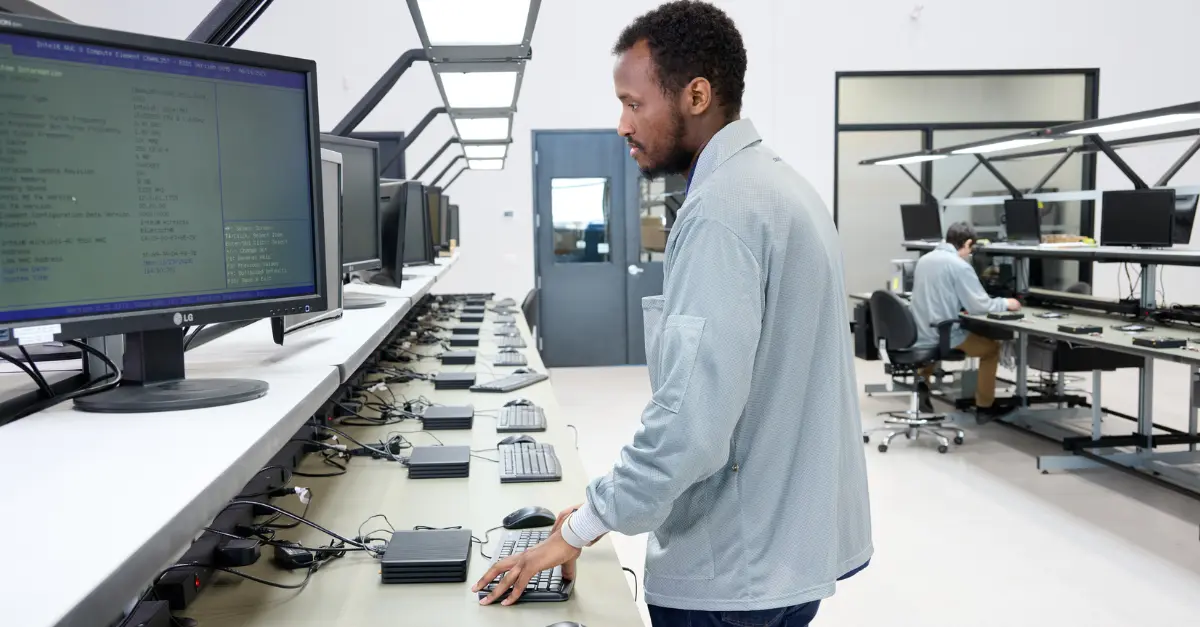
Everything You Need To Know About Burn-In Computer Testing
Blog
Burn-in testing is a crucial process used to evaluate the reliability and stability of a computer system before deployment. In other words, it seeks to determine how effectively the computer is working.
It involves subjecting a system to normal and accelerated operational and environmental conditions to identify potential failures. This process helps to ensure that computers function as expected and reduces the likelihood of failures in the field.
Burn-in can be performed on a sample percentage of units (typically 5-10%) in a batch or on every system before delivery, depending on customer requirements. By identifying weak components early, companies can drastically reduce the probability of failure in the field and improve customer satisfaction.
Why is Burn-in Testing Essential?
Some manufacturers claim their products are highly reliable without much proof. Burn-in testing serves several key purposes:
- Failure Prevention: By exposing components to prolonged stress, burn-in helps detect issues such as overheating, power instability, and component degradation before the system reaches the customer.
- Improved Reliability: Ensuring that every system at least boots and operates within expected parameters before deployment significantly reduces field failure rates.
- Quality Assurance: Provide concrete evidence of a product’s reliability by demonstrating its ability to function under stress.
Challenges in Conducting Burn-in Testing
Despite its benefits, some companies avoid burn-in testing due to the time, specialized software, and expertise required. Running extensive tests on every unit in a production run is resource-intensive, which is why many businesses prefer to outsource this process.
For example, a recent case highlighted how burn-in testing helped uncover a critical issue with Gen 4 NVMe drives in a fanless mini PC. The manufacturer’s datasheet claimed Gen 4 NVMe compatibility, and while this was theoretically accurate based on motherboard compatibility, prolonged use in a real-world setting revealed significant overheating issues that were not present when using Gen 3 NVME drives. By conducting a proper burn-in, this issue would have been identified earlier.
How Long Does Burn-in Testing Take?
The duration of a burn-in test varies based on system complexity and reliability requirements. Typical testing times range from 4 to 48 hours, depending on:
- The level of stress testing required
- The components being assessed
- The overall reliability targets set by the manufacturer
Some burn-in tests may extend further if required to determine the long-term lifespan of components.
Cost vs. Risk: Why Investing in Burn-in Makes Sense
The cost of burn-in testing must be weighed against the risk of failure in the field. Replacing a failed product after deployment can be exponentially more expensive than catching issues early. Factors to consider include:
- The financial and reputational impact of product failures
- The logistical cost of field replacements
- The complexity of diagnosing failures post-deployment
By implementing burn-in testing, companies effectively screen out defective units before they ever reach customers, ensuring a more reliable product and providing peace of mind.
Testing and Burn-in Services by New Era Electronics
New Era Electronics offers comprehensive burn-in testing services tailored to industrial computing needs. Our rigorous testing procedures help ensure that every system we deliver is reliable, stable, and field-ready.
Beyond burn-in testing, we also provide assembly, imaging, and other value-added services to streamline production and reduce deployment risks for our customers.
For more information about our services, don’t hesitate to contact us. Our experienced team is ready to assist with any questions you may have.




